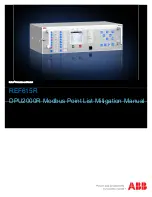
VL-486-4 Reference Manual
Overview – 1
Overview
This chapter introduces the VL-486-4 CPU card, lists its features and specifications, and
provides a brief overview of the installation and configuration process.
Using This Manual
Each chapter in this manual corresponds to a step in the installation process:
•
Chapter 1, “Overview,” lists basic information about the CPU card, specifications, and
system requirements. Use this chapter to familiarize yourself with the card and it’s
capabilities.
•
Chapter 2, “DOS Based Quick Start,” describes how to quickly get your DOS based system
set up and running using a VL-486-4 CPU card.
•
Chapter 3, “Configuration” describes how to jumper and initialize the CPU card.
•
Chapter 4, “Installation,” describes how to install the VL-486-4. It also provides details on
the external connections.
•
Chapter 5, “Register Descriptions,” lists all the user-programmable registers on the CPU
card.
•
Chapter 6, CIO Chip
•
Appendix A, “Schematics” shows the circuit diagrams on the CPU card.
Introduction
The VL-486-4 CPU card features a 32-bit, 50 MHz, clock doubled 486SXLC microprocessor, up
to 4MB RAM, up to 1MB Flash EEPROM or EPROM, two COM ports, one LPT port, digital
I/O and Opto 22 interface, and real time clock. The card can be used as a DOS or non-DOS
computer in either STD 80 or STD 32 Bus systems.
PC/AT C
OMPATIBILITY
Standard I/O and peripheral interfaces and optional onboard firmware, containing BIOS, self
tests, and a setup utility, bring a diskless PC/AT compatible computer to the STD Bus form
factor.
STD BUS C
OMPATIBILITY
The VL-486-4 CPU card complies with certain subsets of the STD 32 Bus specification that
allow it to communicate with STD 80 compatible 8-bit and STD 32 compatible 16-bit I/O and
memory cards. In addition, the card fully complies with the STD 80 Bus specification using a
bus speed of 8.33 MHz. The CPU card is compatible with all I/O and memory cards that adhere
to STD 80 specifications.
1














































